Keep the Five Alive and Save the Rhino!
If the Virginia Zoo had been open to the public today, we would have been celebrating Save the Rhino Day with our wonderful visitors, Zoo Keepers, and of course, our three southern white rhinoceroses. Luckily for us, rhinos are so amazing that they have multiple days devoted to honoring them, so the Zoo is planning a proper celebration later this year. As we enter the fifth month of 2020 (even if it may feel like the 15th month), here are some facts about the five rhino species!
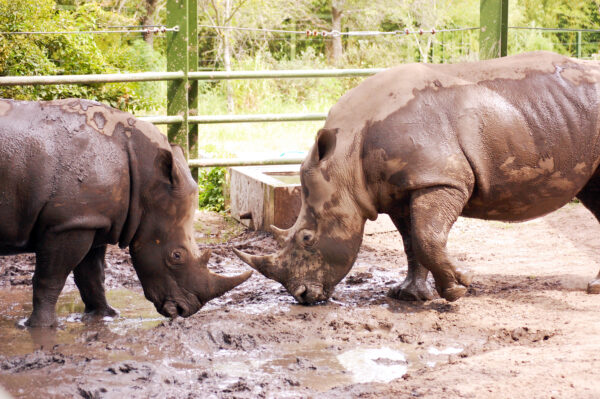
Southern White Rhino
- The kind we have at the Virginia Zoo! Our male is named Sibindi; he is 13 years old and came to us from White Oak Conservation Center in Florida. Our females are Zina and Bora; they are seven-year-old half-sisters, and actually came to us all the way from the Singapore Zoo! All of our rhinos joined our Zoo family in 2017. They are recommended for breeding by their Species Survival Plan.
- Southern white rhinos are the only rhino species currently considered near threatened with extinction by the International Union for the Conservation of Nature (IUCN). Despite their declining population, white rhinos are still considered a conservation success story, as their numbers have increased from less than 100 in the 1900s to over 17,000 individuals in the wild today.
- White rhinos are the most social of the rhino species. Females and their calves will often form herds, while males defend their territories from other males.
- A closely related subspecies, the northern white rhino, is considered functionally extinct as only two females remain. However, scientists have been trying to use frozen genetic material from northern white rhinos to save the subspecies (very “cool” science, right?).
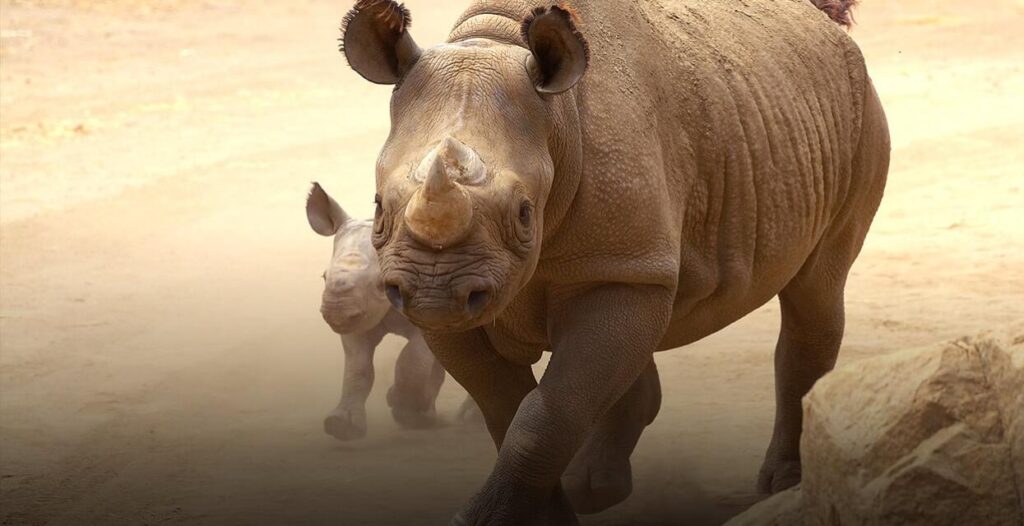
Black Rhinos
- The smaller of the two African rhino species (white rhinos are the other). While white rhinos have a wide mouth for grazing grasses, black rhinos have a semi-prehensile “hooked” lip for grabbing leaves from bushes and shrubs.
- While not considered truly nocturnal, black rhinos seem to be active at night more than other rhino species.
- Black rhinos are critically endangered and are threatened mostly by poaching. Their horns, which are made of keratin just like our fingernails and hair, are often harvested for trophies or mistakenly used as medicine.
- Despite being threatened and poached unsustainably, the black rhino population has still managed to grow from less than 2,300 rhinos in 1993 to around 5,500 today!
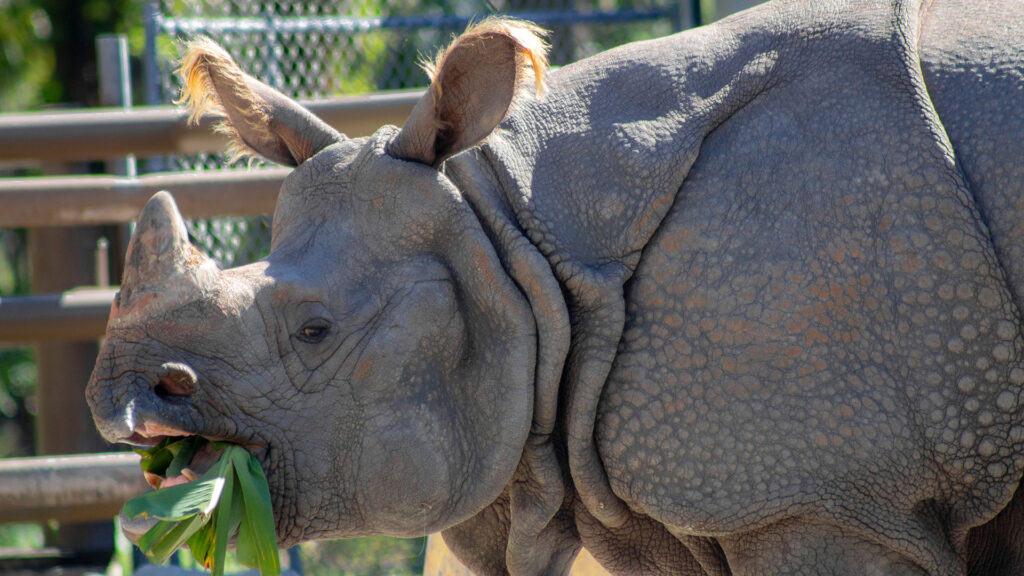
Greater One-Horned Rhino
- Also known as the Indian rhino, this is the largest of the three Asian rhino species. They are roughly the same weight as white rhinos, but sometimes taller.
- Greater one-horned rhinos are grazers (leaf eaters) like black rhinos, but will even submerge themselves in shallow water to feed upon aquatic plants. Some experts even consider them to be semi-aquatic animals!
- Their single horn is used more for rooting around for food rather than as protection from predators. Instead, they will sometimes use their long lower incisor teeth to spar or defend themselves!
- This species is considered vulnerable, the lowest level of threat with extinction defined by the IUCN. They are threatened by human encroachment and poaching.
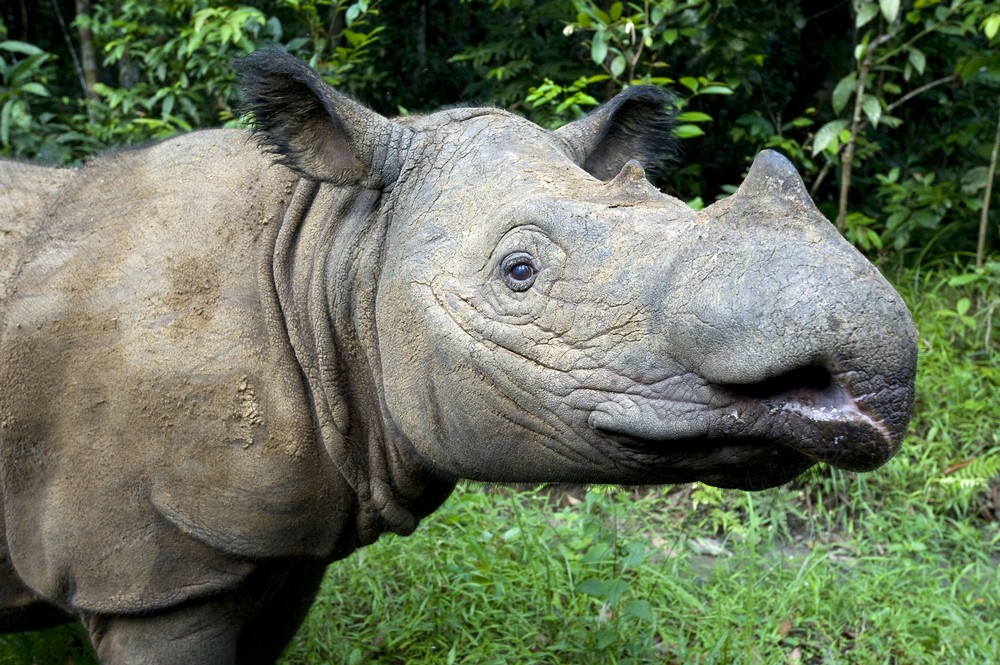
Sumatran Rhino
- The smallest and most endangered rhino species with less than 100 individuals remaining; some experts believe their numbers could be less than 30 rhinos.
- These rhinos, as their name suggests, are found in the tropical forests of Sumatra (and Borneo) in Indonesia. They are primarily threatened by habitat loss more than poaching.
- Research suggests that a climate shift around 9,000 years ago may have caused their numbers to decline rapidly, and the species is struggling to recover to this day.
- One distinctive characteristic of these rhinos are their hairy ears and backs (the babies are hairy all over and VERY cute). They are actually the closest living relative to the extinct wooly rhino!
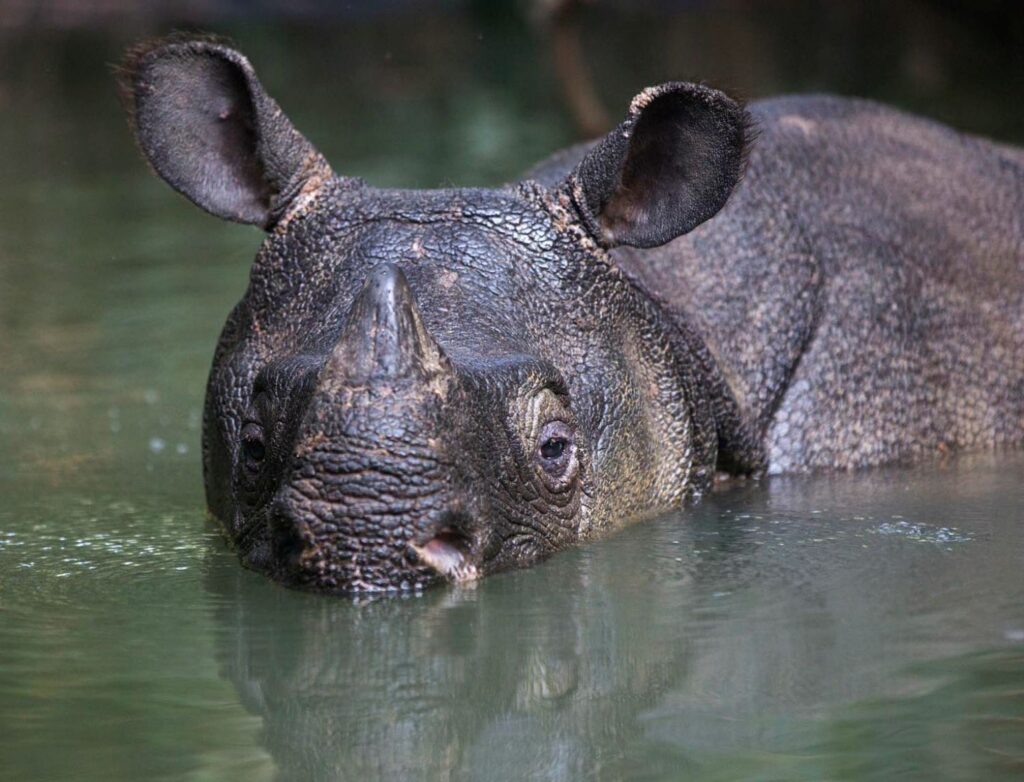
Javan Rhino
- Despite having only 72 individuals and considered critically endangered, this rhino species is considered less endangered than the Sumatran rhino. That’s because Javan rhinos are only found in one national park in Indonesia where they are guarded by Rhino Protection Units. There has been no rhino poaching in Ujung Kulon National Park in over 20 years!
- Because this rhino is so rare and also very shy, less is known about this species than the other four.
- A Javan rhino has the most diverse diet of any rhino; it has been recorded eating hundreds of species of plants.
- While their Sumatran counterparts use salt licks to obtain minerals, salt licks are not found in Ujung Kulon National Park. Instead, Javan rhinos have been observed drinking small amounts of seawater, presumably to obtain similar minerals.
As you can see, the story of the five rhino species is full of both conservation successes and places where there is still work to do. What can you do to help rhino species today and everyday?
- To help the Asian species threatened with habitat loss, make sure to only buy goods with sustainable palm oil or certified by the Rainforest Alliance. You can download the Palm Oil Shopping Guide app here or find rainforest friendly products here.
- To help the African species threatened by poaching, make sure to know what you are buying when traveling overseas. Avoid products made from animal parts and never buy items made from endangered animal or plant species.
- To help all species of rhinos, you can donate to the Virginia Zoo or directly to our conservation partner, the International Rhino Foundation (IRF)!
- On May 5th, the IRF celebrates Cinco de Rhino so share a fun fact about your favorite rhino using #virginiazoo and host a fundraiser on social media!
Thanks to Save the Rhino International and International Rhino Foundation and their rhino species info pages for help with writing this blog.
Blog by: Visitor Engagement Coordinator Sarah Peterson